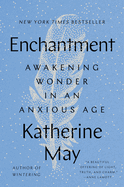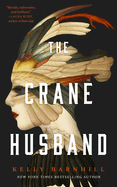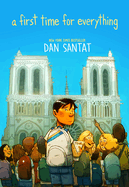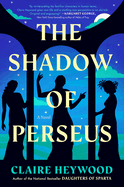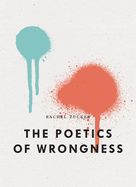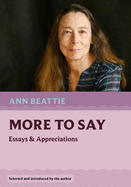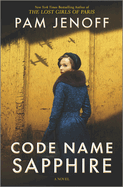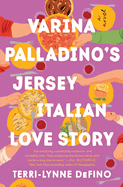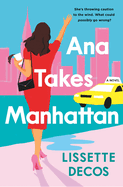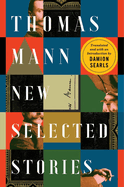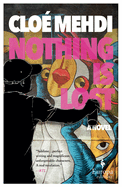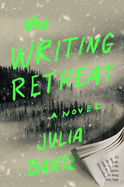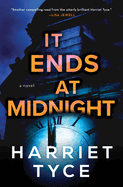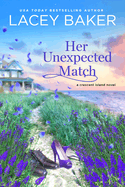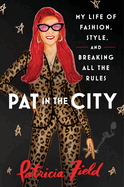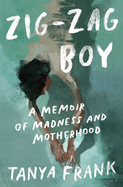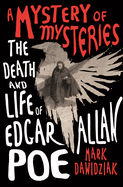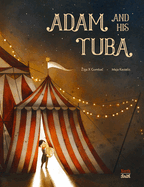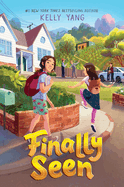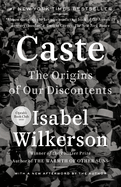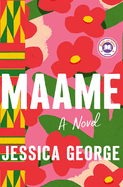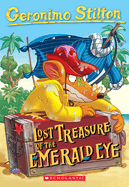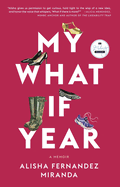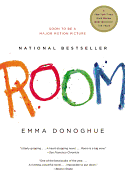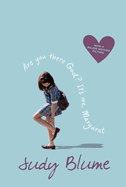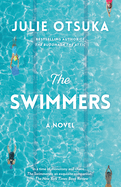Friday, March 3, 2023
Some standout nonfiction among our reviews this week: Enchantment, Katherine May's follow-up to Wintering,"offers poignant reflections on what it means to find--and feel--purpose"; More to Say, Ann Beattie's "28 enchanting essays" almost evenly split between literary and art criticism; The Poetics of Wrongness, four "fascinating" lecture-essays from Rachel Zucker; A Mystery of Mysteries, Mark Dawidziak's "real-life thriller," a recounting of Edgar Allan Poe's last days; and Caldecott Medalist Dan Santat's "emotionally packed, uplifting graphic memoir" of his middle-school years, A First Time for Everything. Plus so much more!
In a fascinating discussion in The Writers' Life, YA authors Andrea Hannah (Where Darkness Blooms) and Trang Thanh Tran (She Is a Haunting) expose "the nature of horror." --Jennifer M. Brown, senior editor, Shelf Awareness
The Crane Husband
by Kelly Barnhill
Master storyteller Kelly Barnhill (When Women Were Dragons; The Ogress and the Orphans; The Girl Who Drank the Moon) offers an evocative and darkly beautiful fairy tale for the modern age in The Crane Husband. A determined and pragmatic 15-year-old girl lives with her family at the edge of what was once their family farm, now a corporatized set of fields watched over by electronic drones. Ever since her father's death, the girl has taken care of her sensitive younger brother and watched over her passionate, enigmatic mother. When her mother, a famed weaver of beautiful tapestries, brings home a tall, cruel and conniving crane, and tells her children to call him "Father," the girl will do whatever it takes to rescue her family from his hypnotic grip.
Barnhill's exceptional talent for threading together imaginative worlds and emotionally resonant characters is on full display in this updated twist on a Japanese folktale. The girl's first-person narration grounds even the more incredible elements of the story, not only because of her character's practicality but also because of her clear-eyed dedication to those she loves. But while the crane man remains the target of the girl's wrath, Barnhill's subtle direction allows the mother's own flickering form to come into focus and centers a nuanced and often heartbreaking relationship between mother and daughter. Ultimately, it is the story's unresolved tensions--between pragmatism and passion, family legacy and freedom, art and commerce, old and new--that succeed in making readers' throats tighten. Barnhill crafts a tale that is both unbelievable and all too real. --Alice Martin, freelance writer and editor
Discover: Like the tapestries its protagonist's mother weaves, The Crane Husband is a richly textured, quietly wrenching reimagining of a once-familiar landscape.
The Shadow of Perseus
by Claire Heywood
The perspectives of three women reveal the cruel, damaged man behind the hero of legend in The Shadow of Perseus, the second inventive reinterpretation of Greek mythology from Claire Heywood (Daughters of Sparta). Danae's father's attempt to thwart the prophecy that her son will be his ruin goes just as badly as such attempts normally do, leaving Danae in exile but pregnant and alive to raise her son, Perseus. Danae tells her son that he's a son of Zeus, conceived in a shower of golden rain. Perseus fears being thought of as weaker than the other boys and, far beyond the age when Danae expected him to realize what everybody else already knew, clings to the belief that he's destined for greatness. He sets out on a voyage meant to make him into a man, which leads him to a reclusive band of women known as the Gorgons--and to Medusa, whose kindness to him becomes her downfall. Andromeda, whom he carries away from her people, finds a determination to survive and, if possible, temper him.
In some ways, this is a bleaker work than Heywood's previous reimagination of Greek myth. This Perseus is an archetype of fragile, toxic masculinity, and readers follow the points of view of women whose lives are upended, at best, in his wake. Yet a strand of hope for an uplifting resolution remains, as those who survive find their voices and learn to mold their own futures. Fans of Madeline Miller's Circe will be enthralled. --Kristen Allen-Vogel, information services librarian at Dayton Metro Library
Discover: Three women's voices reveal not a hero but a dangerous, damaged man in this engrossing reinvention of Greek mythology.
Code Name Sapphire
by Pam Jenoff
Pam Jenoff's 12th novel, Code Name Sapphire, is the gripping account of three women caught up in danger during the Nazi occupation during World War II. After losing her fiancé and her unborn child, German artist Hannah Martel escapes to her cousin Lily's house in Belgium. Hannah, eager to get out of Europe, makes inquiries with a local resistance network known as the Sapphire Line, run by the prickly Micheline and her brother, Matteo. As the network's primary purpose is to ferry downed airmen across the border, Hannah ends up joining the Sapphire Line as an agent while waiting for her own escape. But a series of mistakes and betrayals will put all three women, as well as the line, in serious jeopardy.
Jenoff (The Woman with the Blue Star; The Lost Girls of Paris; The Orphan's Tale) alternates among the three women's perspectives, revealing details about Hannah and Lily's close but complex relationship and Micheline's work in building and overseeing the network. Matteo, who is important to all three women, proves invaluable to the Sapphire Line's work, but the narrative belongs to the women. Jenoff expertly explores the complicated emotions and trade-offs faced by ordinary citizens at the time: Lily's fervent wish to escape the Nazis' notice; her husband's quiet care for medical patients after he loses his professorship; Hannah's impatience and boredom; and Micheline's reluctance to trust anyone. Code Name Sapphire is a worthy addition to the growing stack of World War II stories honoring the courage of anonymous agents, especially women, who refused to let the Nazis win. --Katie Noah Gibson, blogger at Cakes, Tea and Dreams
Discover: Pam Jenoff's 12th novel is a gripping account of three women faced with impossible decisions in World War II-era Belgium.
Go as a River
by Shelley Read
In Shelley Read's moving debut novel, Go as a River, narrator Victoria Nash recalls a hardscrabble childhood in Iola, Colo., and her struggle for a secure future that honors her past.
The book starts as a coming-of-age novel but quickly becomes a story of tragic loss and incredible strength. "In the endless stumble toward ourselves, we harvest the crop we are given," Victoria reflects. At 17, she is resigned to keeping house for the three men of the family, her responsibility for the five years since her mother's death, in addition to doing farm chores and helping in the peach orchard. A chance encounter awakens new feelings, and soon she is "a woman making choices and taking risks rather than an obedient and timid girl." In the social climate of a 1949 farm town, Victoria's choices foreshadow doom. She works to rebuild her life after an unfathomable loss brings a "sadness that transcends sadness"; she is inspired by, and deeply loyal to, the orchard her grandfather planted and the legendary Nash peaches it produces. By 1955, she's the last Nash in Iola, forced to evacuate when the government floods the region to create a dam. Victoria and the heirloom trees, "uprooted and against the odds," successfully transplant; years later, her heart finally finds peace.
Go as a River, framed by two wars (World War II and the Vietnam War), features a deeply sympathetic protagonist. Read writes lovingly and descriptively of her Colorado setting: its snow-capped peaks, deep pine forests, aspen groves, graceful deer, red-tailed hawks and the cold, rushing waters of the Gunnison River whose turbulence is claimed, poignantly, for the region's "progress." --Cheryl McKeon, Book House of Stuyvesant Plaza, Albany, N.Y.
Discover: In this stirring debut novel, a resilient woman with deep roots in her family's peach orchard reflects on coming of age and overcoming sorrows and hardship to create a new life.
The Woman with the Cure
by Lynn Cullen
Lynn Cullen's seventh novel, The Woman with the Cure, opens with a startlingly familiar setting: empty playgrounds in summertime as parents fear their children will be infected by a deadly disease. But the time period is the 1940s, and the disease is polio, a crippling, often fatal diagnosis affecting thousands of children--with no cure or even a vaccine in sight. Cullen (The Sisters of Summit Avenue; Twain's End; Mrs. Poe) constructs a thrilling narrative focused on the work of Dr. Dorothy Horstmann, whose passion for defeating the polio virus would require grave personal sacrifices.
The too-tall daughter of working-class immigrants, Horstmann fights hard for her right to attend medical school. Cullen gives readers a glimpse into Horstmann's background and her complicated but loving relationship with her parents. Most of the novel, however, centers on Horstmann's quest to find a cure for polio and her insistence, despite early evidence to the contrary, that the secret to the virus's transmission lies in its presence in the blood. Mixing medical details with the often-fraught politics of securing funding for research and equipment, Cullen vividly portrays both the dangers of polio (to its patients and even to researchers) and the urgency to find--and claim credit for--a cure. Horstmann, less interested in fame or accolades than her (mostly male) colleagues in the field, learns to work with all of them, including Albert Sabin and Jonas Salk, as they argue over methods, medicines and even research monkeys.
Fast-paced, illuminating and sometimes heartbreaking, The Woman with the Cure is a fitting tribute to an unsung heroine of modern medicine. --Katie Noah Gibson, blogger at Cakes, Tea and Dreams
Discover: Dr. Dorothy Horstmann and her colleagues race to find a cure for polio in Lynn Cullen's thrilling seventh novel.
Varina Palladino's Jersey Italian Love Story
by Terri-Lynne DeFino
A big, bold, brash Italian American family is at the heart of Varina Palladino's Jersey Italian Love Story. This fun-loving, bittersweet novel by Terri-Lynne DeFino orbits around Varina Palladino, a hard-working widow. She's 70 years old, happily single and managing the family's local Italian food specialty shop in Wyldale, N.J. Many characters and plot lines are threaded through Varina's life. This includes Varina's spry 92-year-old mother, Sylvia, who is determined to find a romantic match for Varina. With the help of Donatella, Varina's ne'er-do-well daughter, Sylvia secretly advertises Varina's singlehood. Their bold plan backfires at the same time that Varina's three adult children face their own life challenges. This includes Dante, running the family construction business and flirting with divorce, and Davide, the owner of a hair salon, who is at odds with his erratic younger sister, Donatella, who just can't seem to get her life on track. There's also good-natured, reliable Paulie, once the Palladino family's neighbor and now their border; he was pseudo-adopted by Varina after he came out as gay and his own family disowned him. When Varina, on her birthday, decides to celebrate by fulfilling her lifelong dream to travel, her decision becomes just one of many life-changing transitions made by each member of the family.
DeFino (The Bar Harbor Retirement Home for Famous Writers [and Their Muses]) serves up a hilarious and colorful contemporary epic--filled with the many passions of love, family fireworks, authentic recipes and Italian superstitions and expressions--in which lovably flawed characters wholeheartedly charm readers. --Kathleen Gerard, blogger at Reading Between the Lines
Discover: A lively, fun-loving novel about the exploits of a large, unwieldy and passionate Italian American family on the brink of rebirth and change.
Ana Takes Manhattan
by Lissette Decos
Cuban American author Lissette Decos, a producer of such reality TV programs as Say Yes to the Dress and 90 Day Fiancé, puts her insider knowledge of the industry to use in Ana Takes Manhattan. This fast-paced, fun and flirty first novel is about a single, down-on-her-luck--yet determined--reality TV producer who is stuck in a romance rut.
The organization of list-making is the glue that holds together the life of 30-something New Yorker Ana Karina. Her attention to detail allows her to excel at her job, coordinating over-the-top proposals for the reality TV show Marry Me, You Fool! When things don't play out exactly as they should, Ana and her crew know exactly how to smooth over and seamlessly splice things together into happily-ever-after--that is, until one proposal goes unexpectedly awry and upends Ana's career. The incident disorients Ana as she struggles to regain her confidence and professional footing. She is forced to question herself and her choices: What does she really want out of life? When Ana discovers one of her old lists that outlines exactly what she wants and doesn't want in a perfect mate for herself, she finally cuts loose and sets off on a quest to find "Mr. Right." Dating in earnest, she meets four different men. The problem is that no one man fills the bill. Rather, each man ticks off only one item on the list. What's a gal to do?
Decos's snarky, yet lovably flawed heroine possesses a searing wit that complements many daring escapades that reroute her career and lead her down a twisty road to love. --Kathleen Gerard, blogger at Reading Between the Lines
Discover: A Cuban American reality TV producer sets off on a hilarious journey to find true love, only to discover herself and what she truly wants out of life.
Thomas Mann: New Selected Stories
by Thomas Mann, transl. by Damion Searls
Five shorter works by Nobel Laureate Thomas Mann (1875-1955) receive a makeover in Thomas Mann: New Selected Stories, translated from the German by Damion Searls. In his introduction, Searls writes that Mann is "often thought to be cold, forbidding, humorless, a kind of impenetrable high-culture obelisk." His goal in translating this handful of works is to "show that he was in fact as warm, hilarious, and heartbreaking a storyteller as anyone." These pieces are still recognizably Mann but with variations, such as the retitling of "Disorder and Early Sorrow" to "Chaotic World and Childhood Sorrow," and the unfinished novel English readers know as Confessions of Felix Krull, Confidence Man now has the zippier, more American title, "Confessions of a Con Artist, by Felix Krull." The other entries are "A Day in the Life of Hanno Buddenbrook," in which the piano prodigy of Mann's novel Buddenbrooks shows up late for his 10th grade classes; "Death in Venice"; and the less familiar "Louisey," an engaging and bizarre story of an attorney whose cheating wife asks him to sing a song written by her lover at her spring party.
Whether this translation is faithful to Mann's original text is a question for German scholars, but the result for lay readers is a satisfying, if prolix, trip into timeless themes of youthful innocence; the perpetual struggle between discipline and desire; and more. Readers turn to Mann not for lickety-split action but to take a literary amble through poetic sentences; those in the market for old-school leisure won't be disappointed. --Michael Magras, freelance book reviewer
Discover: Author Damion Searls translates five of Nobel Laureate Thomas Mann's shorter works, including "Death in Venice," in this lively collection.
Nothing Is Lost
by Cloé Mehdi, transl. by Howard Curtis
French author Cloé Mehdi makes an electrifying English-language debut with Nothing Is Lost, translated by the award-winning Howard Curtis. With all-too-familiar timing, Mehdi's disturbing novel highlights police violence, unpunished murder and community trauma.
Mehdi immediately drops readers into a maelstrom of past and present events that are all somehow linked to the "JUSTICE FOR SAÏD" graffiti popping up in a French town. Fifteen years ago, the same words and images protested the brutal murder of an innocent 15-year-old by a policeman who was later acquitted of all charges. Mattia, just 11, wasn't even alive when the tragedy happened, but the fatal consequences have determined his young life. The event caused his father's psychiatric hospitalization where he eventually hanged himself. Mattia, too, attempted suicide four years earlier, resulting in his mother's shocking surrender of him to young Zé, a former patient alongside Mattia's father. Mattia quips that his life might make a "good reality TV show" that he's titled The Daily Life of a Dysfunctional Family. He's not wrong: Zé's girlfriend just survived her own slashed wrists, Mattia's rarely seen mother is missing and his older siblings remain unreliable. With reminders of Saïd looming again on building walls, the police are convinced that Mattia's family--what's left of it--must know why.
Mehdi is an impressively intricate plotter, often presenting situations before expounding on pivotal details: why and how Mattia is Zé's ward seems especially suspect, but Mehdi's logic proves utterly convincing. Her gradual revelation of backgrounds, relationships and connections create quite an addictive thriller; her obvious awareness of socioeconomic and political climates enhances (and haunts) with a layer of sharp enlightenment. --Terry Hong, BookDragon
Discover: An intricate and haunting French mystery arrives in English translation to movingly confront police violence and expose resulting community trauma.
Mystery & Thriller
The Writing Retreat
by Julia Bartz
Alex, the glum protagonist of Julia Bartz's subversive debut, The Writing Retreat, has recently crossed into her 30s. Stuck in long-term writer's block, her dreams of making it as a novelist are just about dead; she holds a thankless and "bleakly underpaid" position in publishing; her sex life is equally bleak; and she still mourns her traumatic friend-breakup with the more successful Wren a year ago. So it feels like a shocking and undeserved honor to be accepted to a fantastically exclusive writing retreat hosted by Roza Vallo, the wildly successful novelist Alex has idolized since she was 12 years old. The catch is that Wren has been accepted, too.
Roza's Blackbriar Estate in the Adirondacks in New York is grand, dramatic and supposedly haunted. Roza herself is famous, rather controversial and private: the five young women attending the retreat must sign NDAs. Alex's adoration of her enigmatic hero is enormous, but she is also nearly crippled by anxiety about being near Wren. The five writers in attendance must each complete a whole novel in just 28 days, and the best of their works will win a million-dollar advance on a publishing deal. Even as the high-speed writing race ramps up and the drama with Wren continues to smolder, it emerges that something still more sinister is going on behind the scenes at Blackbriar Estate. Inexorably, The Writing Retreat evolves into an entertaining yet satirical locked-room mystery, as eight women--five young writers, two staff and Roza--find themselves snowed in at Blackbriar and beset by potentially fatal threats that may be supernatural or simply human evil. --Julia Kastner, librarian and blogger at pagesofjulia
Discover: In this shape-shifting tale, aspiring novelists come together at a possibly haunted estate with a famously reclusive writer--for what turns out to be as much horror as inspiration.
It Ends at Midnight
by Harriet Tyce
This may be some sort of record. The innocent-person-wrongly-accused story, the courtroom drama, the revenge plot: It Ends at Midnight by Harriet Tyce accommodates all three classic crime novel approaches while also incorporating two mainstays of the contemporary thriller--the social media scandal and the #MeToo reckoning. It sounds like a feat of narrative engineering, but Tyce makes it work.
Sylvie Munro, a London barrister turned deputy district judge, has one ambition: "the red sash and purple robes of the Crown Court judge." As It Ends at Midnight begins, she has won an appeal--"[j]ust what I needed for my judge's application"--and is luxuriating in her romance with her caterer boyfriend of six months. "There's a glowing future ahead," Sylvie thinks. In fact, well into the novel, readers would be under the impression that Sylvie hasn't a care in the world if the chapters she narrates weren't intercut with accounts of a grisly crime committed in Edinburgh. The novel's mystery isn't just what happened; it's also who the victims are.
Tyce (Blood Orange; The Lies You Told) metes out information with practiced restraint, interweaving her current-day plot with flashbacks to something that happened more than 20 years earlier, something that Sylvie eventually admits is "the death that changed everything. I remember it now as if it were yesterday." The writing in It Ends at Midnight can be overripe, and readers may be a step ahead of Sylvie on one count--but not, to their eventual gasp-eliciting surprise, on another. --Nell Beram, author and freelance writer
Discover: Harriet Tyce's third thriller is a feat of narrative engineering centered on a London-based deputy district judge whose sunny present is darkened by a grisly crime from her past.
Romance
Her Unexpected Match
by Lacey Baker
Two driven and determined 30-something workaholics cross paths in Her Unexpected Match, the first novel in a fresh contemporary romance series by Lacey Baker (Just Like Heaven), whose novels Christmas in Evergreen: Bells Are Ringing and A Gingerbread Romance were adapted for Hallmark Channel Original Movies.
The story takes place on Crescent Island, a beachfront oasis located off Maryland's Eastern Shore. The getaway destination might have scenic appeal, but it operates like any small town; at least, that's what floundering travel blogger Allie Sparks discovers while visiting her old college friend, an island local. Upon her arrival, an overly zealous Great Dane accosts Allie; the dog belongs to Ryan Parker, the dashing older brother of Allie's friend. Ryan is intent on growing his family-owned and -operated barbecue restaurant. Sparks fly between Ryan and Allie. As they endure the pull and tug of romance, Allie discovers the presence on the island of an anonymous, elusive astrologer-blogger who is also a successful matchmaker. Allie, after deciding to pursue the story, learns that the stars might align for her and Ryan. But what will happen to their love match if Allie decides to publish her story and reveal the island's best-kept secret?
Well-crafted romantic chemistry propels Baker's sweet, captivating love story, which offers a surprising twist. An affectionately drawn cast offers expansion potential for future novels in the series. Readers who enjoy wholesome, hopeful romances will be eager to escape to Crescent Island and all it has to offer. --Kathleen Gerard, blogger at Reading Between the Lines
Graphic Books
The Phantom Scientist
by Robin Cousin, transl. by Edward Gauvin
The vibrant colors--violets, greens, peaches-to-reds--belie a shrouded premise involving chaos, secrecy and even potential murder in The Phantom Scientist by Robin Cousin. The French comics creator/publisher makes his intriguing English-language debut, made possible by prodigious translator Edward Gauvin.
Armed and masked military escorts deliver Martin Sorokin, the director of Institute no. 4, to the Institute for the Study of Complex and Dynamic Systems--and then leave with a warning: "Try to handle things better than the guy before you. It was a disaster area when we showed up." His (late?) predecessor's video lays out Martin's tasks: to populate 24 research labs over six years, with solid results anticipated from residents in the seventh year. Six years pass, and that 24th scientist, Stéphane, who specializes in "morphogenesis," moves into the last empty space in Building F. He joins Louise, a linguist, and Vilhem, who's on the verge of harnessing the future. Missing, however, is the building's first-floor inhabitant, whose research solving the P versus NP problem in theoretical computer science could be linked to his disappearance. Stéphane just wants to continue his plant work, but he can't ignore the encroaching dangers.
Cousin's crisp lines, striking hues and exacting panels offer an inviting visual simplicity that contrasts with the heady references to structures, fractals and proofs. In the midst of showcasing scientific acrobatics, Cousin also cleverly exposes how institutional expectations can turn, if not deadly, then certainly debilitating. "Publish or perish" just might be a literal threat. Comprehension might feel elusive for readers who aren't mathematicians, but Cousin's illuminating artistry reveals rewarding algorithms for graphic enjoyment. --Terry Hong, BookDragon
Discover: French comics creator Robin Cousin makes a compelling English-language debut with a potentially fatal showdown involving systems, statistics, theories and proofs.
Biography & Memoir
Pat in the City: My Life of Fashion, Style, and Breaking All the Rules
by Patricia Field
The classic sitcom Sex and the City (1998-2004) was centered on four women, but it's been said that the show had a fifth star: the clothes. The person responsible is costume designer Patricia Field, whose memoir, Pat in the City: My Life of Fashion, Style, and Breaking All the Rules, is a glittery, frothy account of a life spent scene-making, club-hopping and trend-setting. Field, born in 1942, was perhaps destined to work with clothes: her parents owned a dry-cleaning business in their New York City neighborhood. In 1966, following college and some time in retail and wholesale, Field and her girlfriend opened Pants Pub, a Greenwich Village boutique. Field's eye for expertly blending the high and the low reflected her "lifelong passion for unlikely mixes of different styles." Field's fashion label took off, eventually leading to work in costume design, including for the 2006 film The Devil Wears Prada, for which she earned an Oscar nomination.
Fans of Field's work have included Patti Smith, Britney Spears and other famous folk who make cameos in Pat in the City ("I bought the Tyvek jumpsuits Jean-Michel Basquiat scribbled on"). Field gives kudos to everyone, including herself; about leggings she writes: "I claim to be the inventor." An exception is John F. Kennedy Jr., who was disrespectful to her employees, the "band of freaks" Field writes about so lovingly, as she also does about Manhattan when trans people were first becoming visible, Studio 54 was setting the city alight and her clothes were making everyone look spectacular. --Nell Beram, author and freelance writer
Discover: This memoir by the Sex and the City costume designer is a glittery, frothy account of a life spent scene-making, club-hopping and trend-setting.
Zig-Zag Boy: A Memoir of Madness and Motherhood
by Tanya Frank
Tanya Frank's candid debut memoir, Zig-Zag Boy, which builds on her essay that appeared in the New York Times in 2017, tells the wrenching story of her son's psychotic break and traces how life has changed for her family in the years since.
Frank is from London but in 2002 relocated to Los Angeles, where she lived with her wife and two sons. One night in the autumn of 2009, her younger son, Zach (whom she sometimes calls "Zigs"), then 19, started whispering his suspicions that he was being monitored by telephone wires and that his friends were actually Russian spies. Frank confirmed that he had not taken drugs, checked that his temperature was normal, and--when his agitation continued--took him to the emergency room. This turned into a 72-hour psych ward hold. It was the start of what has been a decade-plus mental health struggle.
The present-tense narration involves readers in an ongoing journey. The pace is brisk and the tone never gives in to self-pity. Regular life doesn't stop during a crisis; Frank weaves in the other challenges she was dealing with simultaneously, such as moving to Northern California and attending marriage therapy. She also compares mental health care in the U.S. and the U.K., where she and Zach returned temporarily. In both countries, she concludes, the system is broken. This is a bracingly beautiful account of learning to live with uncertainty in turbulent times. --Rebecca Foster, freelance reviewer, proofreader and blogger at Bookish Beck
Discover: Tanya Frank's wrenching debut memoir ranges between California and England and draws in metaphors of the natural world as she recounts a decade-long search to help her mentally ill son.
A Mystery of Mysteries: The Death and Life of Edgar Allan Poe
by Mark Dawidziak
The death of prolific writer, poet and literary critic Edgar Allan Poe remains an astonishing and unsolvable mystery well more than a century after it happened. Mark Dawidziak (Mark Twain for Cat Lovers) lays out all the facts in A Mystery of Mysteries, a fascinating retelling of Poe's last days.
Edgar Allan Poe appeared outside an Election Day polling place in Baltimore, Md., on October 3, 1849--disheveled, somewhat incoherent and wearing someone else's clothing. Four days later, he died. Soon after, the physician at Poe's bedside left the field of medicine for the lecture circuit, where he repeatedly varied the account of Poe's death. Poe's stories tend to make the reading lists of American English literature courses, and most libraries and bookstores devote a large section of space to his works. Yet Poe barely made ends meet, and the financial and literary praise commonly associated today with his writings eluded him. Instead, rumors of alcoholism and drug use were (and remain) unfairly linked to his persona. Poe scholars still have lively arguments about Poe's life and death. Even forensic experts have entered the debate, but they can agree on only one thing: no one knows what happened.
Dawidziak assumes that most readers will have a basic familiarity with the works of Edgar Allan Poe and initially takes a just-the-facts approach to A Mystery of Mysteries, but the facts themselves are confounding. The more he reveals, the easier it is to understand why so many people are obsessed with finding the answers. Instead of a dusty, academic account, Dawidziak presents a real-life thriller. --Paul Dinh-McCrillis, freelance reviewer
Discover: A Mystery of Mysteries is a fascinating revisitation of the facts behind the unsolvable death of Edgar Allan Poe.
Essays & Criticism
The Poetics of Wrongness
by Rachel Zucker
Poet Rachel Zucker's work is known for its taut sense of urgency and the way it reflects her lived experience as a mother, wife and teacher in the United States. The Poetics of Wrongness consists of four lecture-essays, expanded from their original form as part of the 2016 Bagley Wright Lecture Series on Poetry. Zucker defines the poetics of wrongness as a way of writing into her belief that being wrong is not the opposite of right; instead, it is an act of opposition itself, a seating of oneself at a table piled with so many "wrongs" that questioning the idea of "right" becomes inevitable.
In the first essay, Zucker (Soundmachine; The Pedestrians; Museum of Accidents) presents six "(anti-)tenets" of the poetics of wrongness, including: "Poetry should be timeless." She argues that some poems "will last and continue to be relevant, but the poetics of wrongness wants a poem that is hard to capture and hard to hold" and seeks poems "with a shelf life, made with living ingredients." Themes of time echo throughout the collection; the book itself arrives on shelves after years of Zucker reworking her essays. This gap tangles with Zucker's assertion that "no writing exists outside of its moment." Leaning into this uncertainty, she urges readers, "Stay with me, stay in the present, this moment, for a moment," then assures them: "This is relevant." Zucker tackles such issues as feminism, confessional poetry, motherhood, bodies and time. And in all, she has written essays made with living ingredients, hard to capture, perhaps, but fascinating to behold. --Sara Beth West, freelance reviewer and librarian
Discover: These essays attempt to define "the poetics of wrongness," a belief that being wrong can be an act of opposition, a way of questioning the very idea of what is "right."
More to Say: Essays and Appreciations
by Ann Beattie
Are writers and visual artists playing the same game? "When my [painter] husband and I have given presentations together," fiction writer Ann Beattie (The State We're In) reports in her introduction to More to Say: Essays and Appreciations, "we're inevitably asked what the relationship is between painting and writing. 'None,' would be the short form...." Yet in one of the 28 enchanting essays that follow, Beattie writes, "One of the reasons I react so strongly to John Loengard's photographs is because I find them so literary." Tracing Beattie's evolving thinking is one of the many pleasures of More to Say, whose essays span 1982 to 2022 and are, in what's tempting to take as a gesture of diplomacy, almost evenly split into literary and art criticism.
Loengard is among the subjects that Beattie writes about in pieces that include straight-up book reviews, as of works by Peter Taylor and Alice Munro, and introductions to books by writers and artists: Andre Dubus and Sally Mann are two of the more familiar names. The richest pieces blend criticism with something else, as when Beattie takes a journalistic turn and delves into the story behind American Gothic, Grant Wood's "much misunderstood" 1930 painting. Although Beattie's fans shouldn't expect confessional content in More to Say, her personal acquaintance with a subject can add an extra layer of interest, as when she wonders about the writer Harry Mathews: "How did I become dear friends with a person who had specially sewn compartments in his shirt pockets for his cigars?" --Nell Beram, author and freelance writer
Discover: Tracing novelist Ann Beattie's evolving thinking is one of the many pleasures of More to Say, which includes 28 essays that span four decades and are almost evenly split into literary and art criticism.
Psychology & Self-Help
Psych: The Story of the Human Mind
by Paul Bloom
Psych is based on the Introduction to Psychology course that Paul Bloom (Against Empathy; The Sweet Spot) has taught for many years at Yale University. In a book he says can be read from cover to cover (his recommended approach) or for his insights into specific topics, Bloom begins with the anatomy of the brain and the insights of neuroscience, and moves on from there in a comprehensive survey that touches upon subjects that include the problem of consciousness, language, emotions, social behavior and much more. He displays an impressive familiarity with the principles and key research of each field, while writing in an enthusiastic, at times almost playful, style that's designed to engage general readers.
Bloom doesn't hesitate to remove some of the icons of his discipline from their pedestals. He considers the enduring appeal of the work of men like Sigmund Freud, B.F. Skinner and Jean Piaget, and then, respectfully but determinedly, proceeds to expose the flaws in their theories.
After a sobering chapter on the challenges of diagnosing and treating mental illness, Bloom finally considers the relatively new subject of positive psychology, something he calls a "messy field" that he says has some great scholars, along with "no shortage of hucksters." And as he concludes this fascinating journey across his sprawling subject, he urges his readers to approach the field to which he's devoted his life with two attitudes: humility and optimism. "The more you look at the mind and how it works from a serious scientific point of view," he writes, "the more you appreciate its complexity, its uniqueness, and its beauty." --Harvey Freedenberg, freelance reviewer
Discover: Psychology professor Paul Bloom offers an engaging, comprehensive, accessible introduction to the field of psychology.
Body, Mind & Spirit
Enchantment: Awakening Wonder in an Anxious Age
by Katherine May
Katherine May (Wintering) offers poignant reflections on what it means to find--and feel--purpose in an age filled with a "growing sense of unreality" in Enchantment: Awakening Wonder in an Anxious Age. The solution to our present-day woes of urgency and fear, she offers, is the titular enchantment, "small wonder magnified through meaning, fascination caught in the web of fable and memory" and "the ability to sense magic in the everyday, to channel it through our minds and bodies, to be sustained by it."
May is far from the first writer to tackle the question of purpose or what it takes to live a happy life. But Enchantment stands out from an otherwise crowded field in the ways it feels at once grounded in the present moment, written on the heels of the Covid-19 lockdowns, and timeless in its questioning. This is not a book of advice or easy solutions but rather an invitation to explore our inner and outer worlds--and how readers might make meaning within them. "We have surrendered the rites of passage that used to take us from birth to death," May writes, "and in doing so, have rendered many parts of our experience unspeakable." And yet she succeeds, somewhat miraculously, in speaking to those very experiences across every page of Enchantment, recalling ocean dips in cold water, visits to hidden forest springs, long road trips to search the sky for meteors and the messy meaning-making found between these moments of awe. Enchantment is a treasure, one that invites grace, compassion and sensuality into our desire to find purpose in an often overwhelming world. --Kerry McHugh, freelance writer
Discover: Enchantment is a beautiful gift of words that invites grace, compassion and sensuality into our collective desire to make meaning in an overwhelming world.
God's Ex-Girlfriend: A Memoir of Loving and Leaving the Evangelical Jesus
by Gloria Beth Amodeo
Gloria Beth Amodeo, raised in a laidback Catholic faith, joined Campus Crusade for Christ as a college student. Her debut memoir, God's Ex-Girlfriend, is a thoughtful, wrenchingly honest account of her seven years inside the movement. It details her experience with Cru, as it's now called, explores the reasons she clung to the community she found, and charts her struggles to get out.
Though Amodeo believed in a loving God, she struggled with her self-image and worried over her mother's mental illness and addiction to pills. When she met Cate--beautiful, self-possessed, logical and confident in her faith--Amodeo became captivated by the community Cate offered her and the seeming ease of belonging there. She questioned the movement's Calvinist and often sexist theology, especially its stances on LGBTQ+ people and premarital sex. But for a time, Cru offered a warm, welcoming community and a way to build an identity in an intimidating world.
Amodeo writes in sharp, often witty prose about her insecurities, the appeal of the people she met through Cru and her constant unease about befriending nonbelievers in order to evangelize them. She charts her increasing anxiety, her eventual "breakup" with the movement and her journey toward a more expansive life. Though its ending feels a bit rushed, Amodeo's memoir is an important perspective on a powerful parachurch organization that has indoctrinated numerous college students. But more than that, it's a funny, absorbing account of a young woman finding her way in the world and learning to embrace mystery rather than rules. --Katie Noah Gibson, blogger at Cakes, Tea and Dreams
Discover: Gloria Beth Amodeo's sharp, witty memoir explores her time inside an evangelical Christian movement and her struggle to free herself from its ironclad beliefs.
Children's & Young Adult
A First Time for Everything
by Dan Santat
Caldecott winner Dan Santat (The Adventures of Beekle; The Aquanaut) found his protagonist for the charming graphic novel A First Time for Everything in the mirror. Santat's illustrated memoir depicts his regularly awkward, sometimes downright embarrassing middle school experiences, with a focus on a European trip that opened his eyes to the world beyond the discomforts of adolescence.
Before middle school, Dan "did normal kid stuff." When he got to middle school, though, being a kid suddenly felt "stressful." He learned that the "best way to survive was to keep a low profile," to "be invisible." Despite his best efforts at staying inconspicuous, he was still teased and bullied, so the idea of a school-sponsored trip to Europe terrifies him more than it excites him. Though he tells his mother, "I'd rather stay in my room and not be bothered by people," his parents don't give him that option. The three-week trip turned out to be the kind of early-adolescent experience that would shape the man Dan became.
Santat's authentic voice and realistic characters will likely take older readers back to their own middle school days while reminding current middle school-age readers of their own teen angst. Santat's splendidly expressive digital illustrations cement those emotional connections and highlight the humor even in the most agonizing of moments. He unpacks his transformational experience with vulnerability and raw honesty--the sincerity is heartening and the outcome inspiring. --Jen Forbus, freelancer
Discover: Caldecott Medal-winner Dan Santat exposes his middle-school self in an emotionally packed, uplifting graphic memoir about adolescence's first experiences.
The Worlds We Leave Behind
by A.F. Harrold, illus. by Levi Pinfold
A.F. Harrold and Levi Pinfold's second collaboration (after The Song from Somewhere Else) is a beautifully formed illustrated novel that is grounded in the everyday, then elegantly spirals into the unknown. The Worlds We Leave Behind is a surreal commentary on forgiveness, revenge and the interconnectedness of humankind.
It all goes wrong the morning Sascha, younger and uninvited, follows best mates Hex and Tommo into the woods. The boys take turns on a rope swing and when it's Sascha's turn, there's a mud-clod fight, a stone is thrown and Sascha loses her grip on the swing. In a slow-motion moment that "the world pause[s] to watch," she falls and breaks her arm. The next day, Hex returns to the swing. Sascha's sister, Maria, punches him and, "bruising with humiliation and shock," he runs deeper into the forest. There a "small, bright jolly-looking woman" offers him revenge: if Hex crushes an acorn, the girl who hit him will "be gone, as if they'd never been." Hex takes the acorn home and loses it. But, unbeknownst to Hex, Maria was also given an acorn which she ground to bits. While the world reshapes around the absence of Hex, Maria learns what it means to make someone disappear.
Harrold's wonderfully crafted, mesmerizing text unfolds through different points of view, the chain of voices echoing the ripples of the ever-evolving world. Pinfold's meticulous and enchanting black-and-white illustrations blend perfectly with and enhance the brooding, otherworldly atmosphere of the text. This sophisticated novel exists in a delightfully dark place between fairy tale, horror and science fiction, and opens up a fascinating world of what-ifs. --Lynn Becker, reviewer, blogger, and children's book author
Discover: The Worlds We Leave Behind offers a wonderfully crafted, surreal commentary on forgiveness, the nature of revenge and the interconnectedness of humankind.
Adam and His Tuba
by Žiga X. Gombač, illus. by Maja Kastelic, transl. by Olivia Hellewell
Shades of radiant gold and burnished red gently gleam from the inspiring pages of Adam and His Tuba, a mellifluous Slovenian import. The harmonious collaboration from author Žiga X. Gombač, credited with almost 200 books, songs and comics, and artist Maja Kastelic, a former fresco restorer and now award-winning illustrator, benefits from Oliva Hellewell's smooth English translation.
The multi-generational Von Trapeze circus family has been traveling the world with their red-and-white-striped tent, showcasing the "many incredible things" its members can do. Grandma Antonia breathes fire, Grandpa Angus swallows swords and twins Aria and Alea juggle while, respectively, unicycling and getting fired out of a cannon. Together they all "bask in rapture and applause" at performance's end--except for the youngest Von Trapeze, Adam, who can't be coaxed, trained or convinced to enter the limelight. Of course, no one thought to ask what Adam wanted... until someone finally did. Adam and his tuba, they quickly learn, might offer the perfect accompaniment to the show.
Gombač's encouraging text doesn't always avoid the didactic, but his heartfelt support of individual difference is evident on every page, whether celebrating each of the Von Trapezes' talents or cleverly building up the inevitable reveal of Adam's impressive ability. Kastelic's art places Gombač's story in a cheerfully historic setting and augments the text with whimsical splendor. Her insightful, empathic expressions are particularly beguiling. Adam's closed-eye, head-tilted, pink-cheeked contentment while playing his tuba just might be satisfaction goals for every reader. --Terry Hong, BookDragon
Discover: A Slovenian writer/artist pair ensure Adam and His Tuba is ready to whimsically inspire and entertain an English-reading audience.
Finally Seen
by Kelly Yang
Ten-year-old Lina emigrates from China to join her family in America after a five-year separation in the heartfelt middle-grade novel Finally Seen by Kelly Yang (Parachutes).
Lina Gao is not sure why, at five years old, she was left behind in China with her grandparents when her parents and baby sister moved to the U.S. Five years later, the Chinese-speaking Lina is now joining her family, but nothing is quite as she expected: her dad's a farmer, not a scientist, and the nail salon where Mom worked closed down so she started selling homemade bath bombs on Etsy. Perhaps most concerning is that the house Mom said they lived in is actually an apartment and something called the "rent moratorium" is coming to an end. As one neighbor puts it, "If you can't pay up, they gonna evict you." Lina encounters more uncomfortable surprises and frustrations when she begins school, where she works to learn English. When a teacher introduces her to graphic novels, Lina finally finds a way to communicate with the world around her.
Yang's earnest, heartfelt novel approaches immigration and family from a contemporary point of view, including the pains and injustices felt by many during the pandemic. Her characters are a strong point of the book and, as Lina gets to know each multifaceted individual, she becomes a part of the community. Finally Seen is, as Lina would say, "a sliding door" into a world many have never experienced and "a mirror" for those who have. --Kyla Paterno, freelance reviewer
Discover: Ten-year-old Lina emigrates from China to join her family in America after a five-year separation in this heartfelt middle-grade drama.
In the Media
The Writers' Life
Andrea Hannah and Trang Thanh Tran: The Nature of Horror
 |
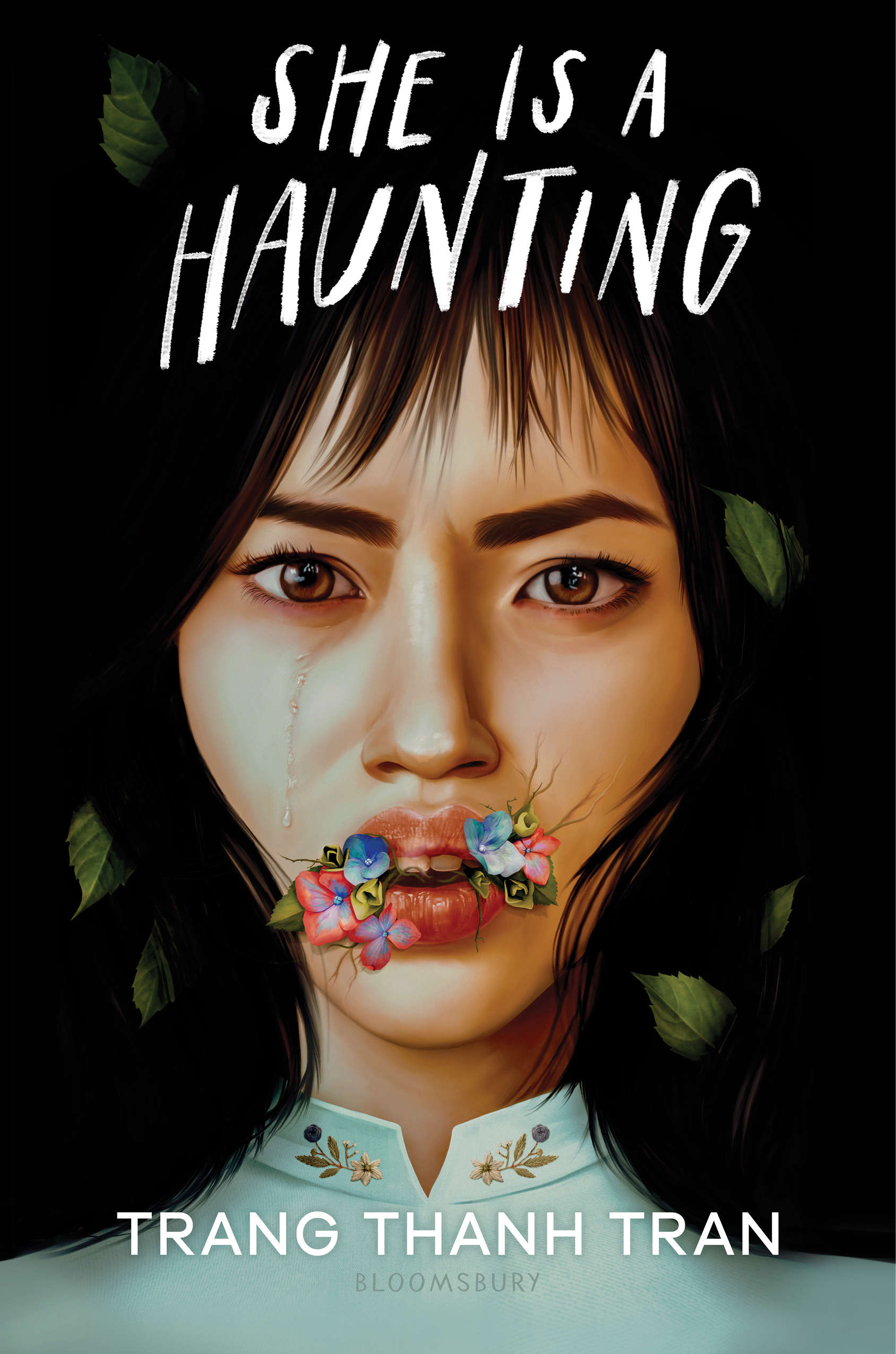 |
Andrea Hannah is an author, astrologer and workshop leader. She teaches about the creative process to people all over the world through her workshops and retreats. She is the author of Where Darkness Blooms (Wednesday Books).
Trang Thanh Tran writes speculative stories about food, belonging and the Vietnamese diaspora. When not writing, they can be found over-caffeinating on iced coffee and watching zombie movies. She Is a Haunting (Bloomsbury) is their debut novel.
Here the authors discuss how the horror genre is growing and changing, social commentary in horror fiction and writing the terrifying for teens.
Andrea Hannah: It's bananas that there were so many similar motifs in our books, even though we didn't know each other! I wonder if there's something in the collective consciousness about scary flower girls at the moment. There are so many current horror releases that blend themes of sentient nature and body horror in unique and interesting ways. It's a really exciting time to be a horror fan.
Trang Thanh Tran: Right! Coming-of-age can be such an isolating experience where you're learning things about yourself, your body and your relationships with the outside world. Emotionally, there's so much going on. I often joke that my books are about the horrors of growing up. Not everything is a metaphor, but also everything is a metaphor. It's fun to explore that in a horror novel, as nature--which is always growing or rotting--creeps in.
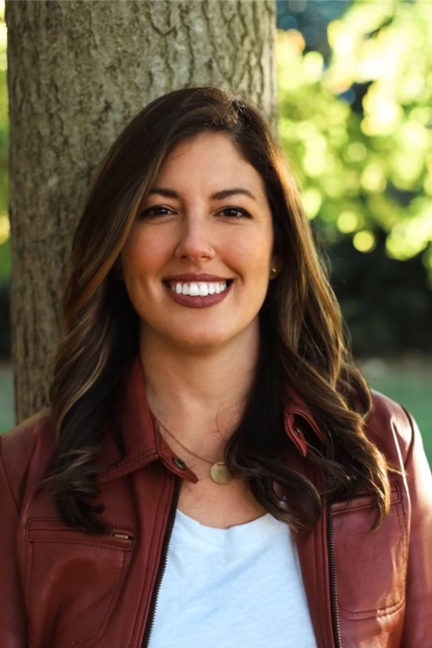 |
|
| Andrea Hannah (photo: Brooke Light) |
|
Hannah: You bring up a good point about nature as a metaphor for growing up. I think up until your teenage years, you tend to see the world in a pretty one-dimensional way, through no fault of your own, of course. Then, all of a sudden, everything seems so much more complex and nuanced than you realized. In Where Darkness Blooms, our four main girls have been living on blood-thirsty, cursed land their entire lives, but they had mostly been sheltered from harm by their mothers. When their mothers disappear, they begin to see the sunflowers lurching toward them, the wind whispering in their ears, and so on. Nature is beautiful and it's extremely brutal. I think that juxtaposition makes for the perfect entry point to really potent horror.
When you started drafting your book, did you intend to thread in a larger commentary on colonialism or did you intend to write one girl, one summer?
 |
|
| Trang Thanh Tran (Heather Wall Photography) |
|
Tran: It's the story of one girl and her family. I try to lead with a character in my books because the emotional journey is most important to me. But characters have history, too, and because her family survived colonialism in Vietnam, "commentary" naturally came up in Jade's perspective. Jade's exploring the cost of survival and all the bits of her family that she could never know, which is a human thing to do. Did you feel pressure to comment on social issues when writing your book?
Hannah: I didn't go out to specifically write a social horror or make a commentary like "patriarchy sucks" but I've long been trying to navigate the society we live in. The question of patriarchy--who benefits, how they benefit and the damage it causes psychologically, socially, economically and so on--is something that has gnawed at me. I've experienced and witnessed the very real damage it's done, so I guess it was kind of inevitable that it ended up in the book as well.
Tran: Yeah, even when it's speculative, it's informed by the systems we live in. Serious, campy, dreadful--horror can be any of those things and still have an impact. The variety is what's exciting. Did you write your book with the intention of it being horror?
Hannah: Honestly, no! That said, I've always known that my body of work has hung close to the threshold of "horror," but I didn't feel like I could call it that because I hadn't seen much horror done this way until recently! Let's be honest, the themes, tropes and motifs of horror as a genre have been written into place by (mostly) men. I'm afraid of different things than what a man might write about, and my experiences dictate how I express those fears in a story. But I'm happy to say things are starting to change. It's so much fun to watch the genre bloom (pun 100% intended) into something that can include everyone.
Tran: Shelves in the "Horror" section of most bookstores still have many of the same books I grew up reading. I'm ready to see the new generation of writers get some of those spots--the writers who had formative experiences reading these books and are now pushing those boundaries. We talked a bit about characters and us living in a world with issues that bleed into the writing. Let us read that, too! That's one reason I really wanted my cover to have a Vietnamese girl on it, so readers know it's unapologetically about this specific Final Girl.
Do you think there are special considerations when we write horror for teens?
Hannah: In my opinion, teenagers are well-equipped to read about the darker parts of life. Horror can also be extremely cathartic. When done well, horror is just raw honesty reflected on the page. The creepy haunted house or menacing sunflowers may be fake, but the fear and overwhelming emotions are very real, and the story can carry them through it all.
Tran: Some things teens deal with in their day-to-day life are already horrifying, so I think they can read almost anything if they want to. I keep in mind that with YA, my teenage audience comes first. I want to dig in anxieties and experiences that they may be grappling with. Horror can be that safe space to explore all these fears. When they close the book, the monsters stay inside. Horror can be healing in that way.
But to be the final girl in any story, you have to first exist in that story. In the past, queerness was sometimes used in conjunction with being bad or being evil. Now that queer people's stories are more visible, I feel there's a wider range of characters for people to see themselves in--or to just enjoy reading about!
Hannah: Honestly, same! How many slasher movies have we seen where a girl gets murdered after making out with her boyfriend in the woods? There's a lot of heteronormativity in the genre and it plays a role in the plot. The drunk dude lures a girl into a dark place, and she dies, then bam--there's the catalyst to introduce the audience to the killer. It's well past time to break out of that mold. We need to see the full spectrum of connections and emotions for horror to strike a nerve. If horror is a safe space to examine our fears through the emotions it evokes, then don't queer people deserve that opportunity, too?
Book Candy
Book Candy
CrimeReads unraveled "the best plot twists in mystery."
---
"Turning the pages of an illuminated medieval manuscript: an ASMR museum experience." (via Open Culture)
---
Mental Floss shared "7 facts About Taylor Jenkins Reid's Daisy Jones & The Six."
---
Bookshelf examined Abraham Lincoln's law office bookcase.
Rediscover
Rediscover: Heartburn
 Rom-com queen Nora Ephron's novel Heartburn turns 40 this year. Based on her marriage to Carl Bernstein, Heartburn follows Jewish food writer Rachel Samstat (based on Ephron), who moves from New York to Washington, D.C., in support of her husband, political journalist Mark Feldman (based on Bernstein). Seven months through her second pregnancy (the couple already have one young son), Rachel discovers Mark is having an affair with Thelma Rice (based on Bernstein's real lover, Margaret Jay, wife of the British ambassador). Rachel responds by spreading rumors about Thelma, vacillating between wanting Mark back and wanting to kill him, and taking comfort in her food writing. Ephron peppers the novel with recipes, one of which reemerged late last year in a social media tizzy over Olivia Wilde, Jason Sudeikis, Harry Styles and some salad dressing. Author Isabel Kaplan also wrote a piece recently in the Guardian about Heartburn and her own breakup. The book continues to resonate.
Rom-com queen Nora Ephron's novel Heartburn turns 40 this year. Based on her marriage to Carl Bernstein, Heartburn follows Jewish food writer Rachel Samstat (based on Ephron), who moves from New York to Washington, D.C., in support of her husband, political journalist Mark Feldman (based on Bernstein). Seven months through her second pregnancy (the couple already have one young son), Rachel discovers Mark is having an affair with Thelma Rice (based on Bernstein's real lover, Margaret Jay, wife of the British ambassador). Rachel responds by spreading rumors about Thelma, vacillating between wanting Mark back and wanting to kill him, and taking comfort in her food writing. Ephron peppers the novel with recipes, one of which reemerged late last year in a social media tizzy over Olivia Wilde, Jason Sudeikis, Harry Styles and some salad dressing. Author Isabel Kaplan also wrote a piece recently in the Guardian about Heartburn and her own breakup. The book continues to resonate.
A film adaptation of Heartburn starring Meryl Streep and Jack Nicholson was released in 1986, with Ephron adapting her own book into the screenplay. Despite repeated threats to sue over the novel and film, Carl Bernstein never did. On March 7, Vintage will release a 40th anniversary edition of Heartburn featuring a new foreword by actor, author and famous foodie Stanley Tucci. --Tobias Mutter


